Early Alzheimer’s Symptoms Families Rarely Recognize
Alzheimer’s disease affects over 6.7 million Americans, a number expected to triple by 2060, according to the Centers for Disease Control and Prevention. As a progressive brain disorder, Alzheimer’s erodes memory and cognitive function, often going undetected in its early stages. Many families miss subtle warning signs, leading to delayed diagnosis and intervention. Early detection is critical, yet the challenge remains that the earliest symptoms are frequently mistaken for normal aging or overlooked entirely. Understanding these early changes is key to providing timely care and support.
1. Subtle Short-Term Memory Lapses

One of the earliest and most commonly overlooked symptoms of Alzheimer’s is mild short-term memory loss. Individuals may begin to forget recent conversations, misplace everyday objects like keys or glasses, or repeatedly ask the same questions. These lapses are usually subtle—such as forgetting a recently made appointment or details of a just-watched television show—and are often dismissed as normal aging.
This symptom stems from changes in the hippocampus, the region of the brain responsible for forming and retrieving new memories. As Alzheimer’s disease begins to affect the hippocampus, the ability to store new information deteriorates, while older, long-term memories remain relatively intact in the early stages. Families frequently overlook these lapses, attributing them to stress, distraction, or typical age-related forgetfulness rather than warning signs of a neurodegenerative disorder.
Recognizing these memory issues as potential early indicators is crucial for timely intervention. According to the Alzheimer’s Association, persistent problems with memory, especially those impacting daily life, warrant further evaluation. Early acknowledgment of these signs can lead to earlier diagnosis and improved management of the disease’s progression.
2. Repeating Questions or Stories
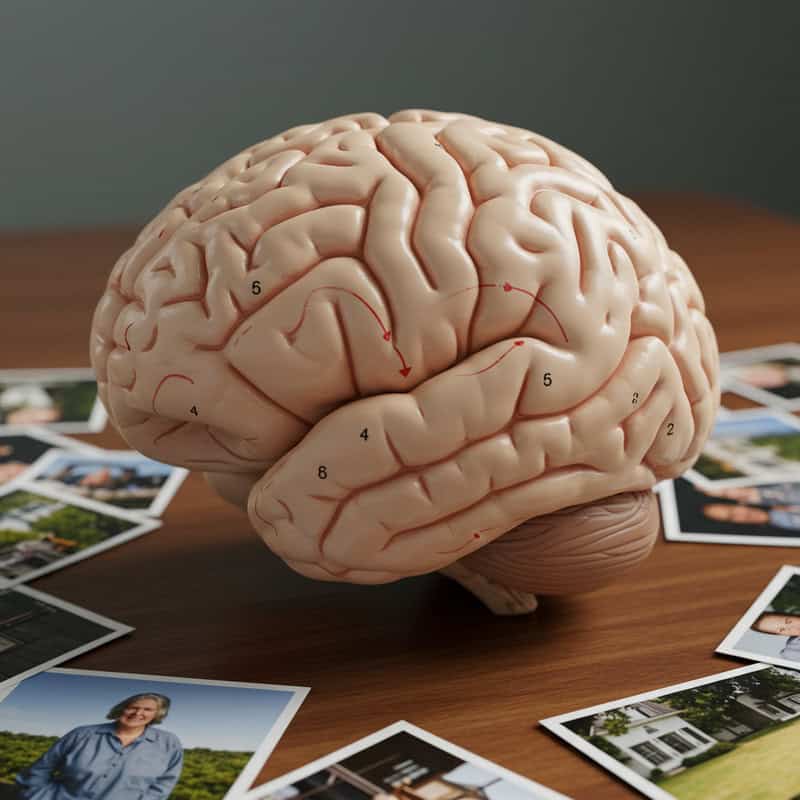
Another subtle sign of early Alzheimer’s is the frequent repetition of questions, stories, or statements within short periods. This repetitive behavior is rooted in the neurological changes occurring in the brain’s memory centers, particularly the hippocampus and associated temporal lobe structures. As these regions become impaired, the ability to retain new information diminishes, leading individuals to forget that they have already shared a story or asked a question just moments earlier.
Such repetition can easily be mistaken for typical aging, especially since occasional forgetfulness and repeated stories are not uncommon among older adults. However, when this pattern becomes persistent—when a loved one asks the same question multiple times in a single conversation or tells the same anecdote repeatedly within a few hours—it may indicate the onset of Alzheimer’s disease.
Experts at the Mayo Clinic stress the importance of distinguishing between normal age-related changes and the repetitive behaviors associated with dementia. If repetition is frequent enough to disrupt daily interactions or cause frustration within the family, it is a strong signal to seek medical assessment. Early recognition and intervention can help families plan for future care needs and access available treatments.
3. Difficulty Managing Finances

Early Alzheimer’s often manifests as problems managing personal finances—a task that relies heavily on executive function, attention, and memory. Individuals may begin to struggle with paying bills on time, balancing checkbooks, or understanding bank statements. These difficulties can result in missed payments, unpaid bills piling up, or even unintentional overspending, all of which may go unnoticed until more severe financial issues arise.
The underlying cause is the gradual decline in the brain’s frontal lobes, which are responsible for higher-level cognitive processes such as planning, organizing, and problem-solving. As Alzheimer’s impairs these areas, the ability to manage even routine financial tasks diminishes. Family members might first observe unusual purchases, confusion over simple transactions, or repeated questions about account balances.
According to the National Institute on Aging, financial mismanagement is frequently one of the earliest and most telling signs of cognitive decline. Loved ones should pay close attention to patterns such as late notices, unopened mail, or increased anxiety surrounding money matters. Recognizing these red flags early allows families to intervene, protect assets, and seek appropriate medical guidance for a formal assessment.
4. Misplacing Everyday Objects

One early warning sign of Alzheimer’s is frequently misplacing everyday items—such as keys, wallets, or eyeglasses—and often putting them in unusual places. Unlike simple absentmindedness, which may result in temporarily forgetting where an object was left, Alzheimer’s-related misplacement is more persistent and perplexing. For instance, a person may place the remote control in the refrigerator or store car keys in a bathroom cabinet, later being unable to retrace their steps or recall the rationale.
This behavior is linked to errors in spatial memory and orientation, functions managed by the hippocampus and other memory-related brain regions. As Alzheimer’s progresses, the brain’s ability to map out and remember the locations of objects deteriorates, leading to increasingly odd hiding spots and growing frustration.
The difference between normal forgetfulness and a potential sign of Alzheimer’s lies in frequency and context. According to the Alzheimer’s Association, occasional misplaced items are common for everyone, but when it becomes a regular pattern—especially with items ending up in bizarre places—families should take notice. If a loved one is often unable to retrace steps or repeatedly accuses others of “stealing,” it’s time to seek professional evaluation.
5. Getting Lost in Familiar Places

Navigation difficulties, especially in places once well-known, are a hallmark of early Alzheimer’s disease. These challenges stem from changes in the brain’s parietal and temporal lobes, which are responsible for spatial awareness and orientation. As these areas deteriorate, individuals may find themselves disoriented in their own neighborhood, lose track of familiar routes, or have trouble following directions to frequently visited locations, such as the local grocery store or a friend’s house.
Real-world examples include taking much longer than usual to return from a routine walk, forgetting the way home while driving, or being unable to piece together the steps to reach a familiar room in their own house. While everyone occasionally experiences momentary confusion, such as entering a room and briefly forgetting why, Alzheimer’s-related disorientation is more severe and frequent.
The National Institute on Aging warns that consistent problems with navigation, getting lost in safe or well-known environments, or needing frequent reminders for routes are serious red flags. If a loved one becomes anxious about leaving the house alone, or if loved ones notice unexplained absences or confusion about locations, a medical evaluation is urgently recommended.
6. Struggling to Find the Right Words

Early Alzheimer’s can cause noticeable language difficulties, particularly when it comes to finding the right words during conversation. This symptom, known as anomia, is more than the occasional “tip of the tongue” experience common in normal aging. Instead, individuals may frequently pause mid-sentence, substitute incorrect words, or use vague terms like “thing” or “stuff” in place of specific nouns. Conversations may become halting or less fluent, and the person might repeat themselves as they search for the correct expression.
This language impairment arises from the disease’s impact on the brain’s left temporal lobe, which controls both speech production and comprehension. As Alzheimer’s progresses, word-finding difficulties become more frequent and pronounced, sometimes leading to frustration or embarrassment in social settings. Unlike typical forgetfulness, these episodes are persistent and can interfere with the ability to communicate basic ideas or needs.
The Alzheimer’s Association recommends seeking evaluation if you notice ongoing struggles to name familiar objects, confusion with vocabulary, or increasing reliance on fillers in speech. Early recognition of these changes can prompt timely medical intervention and support for both the individual and their caregivers.
7. Trouble Following Conversations

Difficulty following conversations is another subtle but important sign of early Alzheimer’s disease. As attention span and information processing diminish, individuals may struggle to keep up with group discussions, lose track of a story’s thread, or have trouble understanding complex or rapid exchanges. These deficits can result in frequent requests for repetition, responding inappropriately, or withdrawing from conversations altogether to avoid embarrassment.
Common scenarios include getting lost during a family dinner conversation, being unable to follow plotlines in movies or television shows, or having difficulty jumping between topics in casual chats. These issues go beyond occasional distraction or momentary lapses in focus; they are persistent and often noticed by friends and family before the individual recognizes the problem themselves.
The root of these difficulties lies in Alzheimer’s-related changes to the brain’s frontal and temporal lobes, which affect auditory processing and working memory. According to the National Institute on Aging, if a loved one consistently loses track of conversations, seems increasingly confused by verbal exchanges, or starts to avoid social interaction, it’s time to seek further evaluation. Early intervention can help manage symptoms and provide much-needed support for communication challenges.
8. Withdrawal from Social Activities

One early but frequently overlooked indication of Alzheimer’s is a gradual withdrawal from social activities, hobbies, or group interactions. While natural introversion or occasional desire for solitude is normal, Alzheimer’s-related withdrawal is often rooted in apathy, anxiety, or embarrassment over increasing cognitive difficulties. Individuals may stop participating in clubs, avoid gatherings with friends, or lose interest in long-enjoyed pastimes.
This change is more than a shift in personality; it reflects underlying brain changes that impact motivation, mood, and the ability to process social cues. The Alzheimer’s Association notes that apathy—one of the most common neuropsychiatric symptoms in early Alzheimer’s—can make once-pleasurable activities feel overwhelming, confusing, or unfulfilling. Anxiety about memory lapses or trouble following conversations may further discourage social engagement.
Families should be alert to signs such as declining invitations, giving up on favorite activities, or becoming noticeably passive in group settings. Unlike normal introversion, this withdrawal is often accompanied by sadness, irritability, or a sense of isolation. When these patterns persist, it’s important to seek medical advice, as early intervention can help address emotional symptoms and improve quality of life.
9. Decreased Interest in Hobbies

A marked decline in interest or participation in hobbies and favorite activities can be an early sign of Alzheimer’s disease, often overlooked or attributed to normal aging. This loss of initiative is related to subtle changes in the brain’s frontal lobes, which govern motivation and goal-directed behavior. As these areas are affected, individuals may find it increasingly difficult to start or complete projects, maintain routines, or experience enjoyment from activities they once loved.
For example, someone who previously enjoyed gardening, painting, or playing cards may suddenly abandon these pursuits, let supplies gather dust, or fail to follow through with longstanding routines. This decline in enthusiasm goes beyond ordinary boredom or temporary disinterest; it may become persistent and noticeably affect daily life and mood.
The Alzheimer’s Association highlights that such changes in initiative, especially when paired with other cognitive symptoms, should be taken seriously. Families should watch for patterns like unfinished projects, reluctance to start new activities, or loss of excitement for once-cherished hobbies. When these behaviors become chronic, it’s important to seek professional assessment, as early support and intervention can help maintain engagement and quality of life.
10. Changes in Mood or Personality
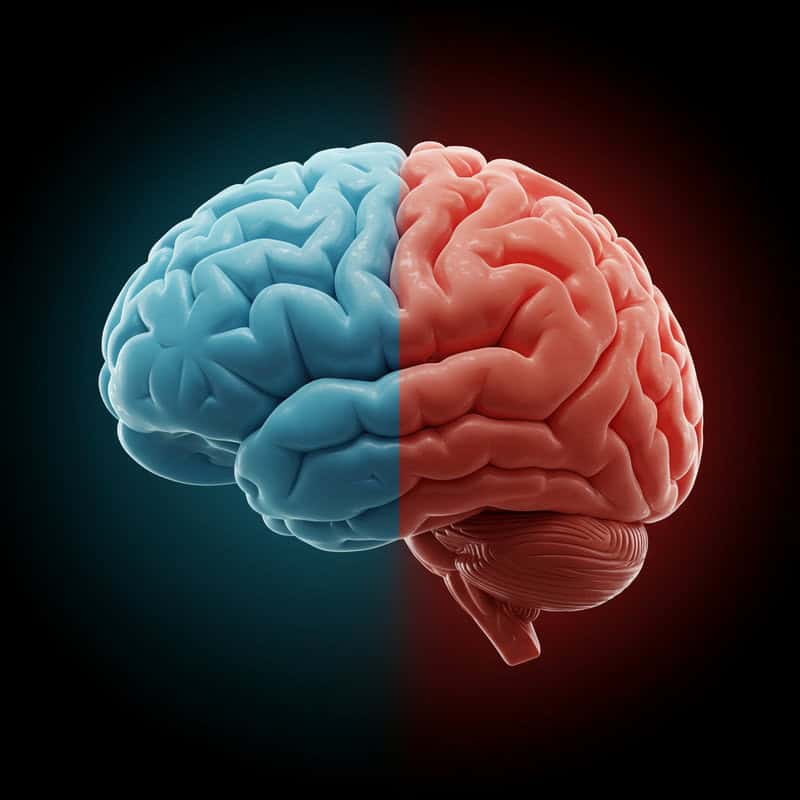
Unexpected changes in mood or personality—such as increased irritability, anxiety, depression, or suspicion—can be an early sign of Alzheimer’s disease. These shifts are often the result of neurochemical changes in the brain as well as damage to regions involved in regulating emotion and behavior, including the frontal and temporal lobes. Unlike mood changes triggered by ordinary stress or life events, Alzheimer’s-related mood swings may appear suddenly and without a clear cause.
Individuals may become easily upset in new situations, unusually withdrawn, or exhibit uncharacteristic anger, impatience, or sadness. Family members might notice that their loved one is less tolerant, more prone to frustration, or quick to misinterpret the intentions of others. Paranoia or suspicion—such as accusing others of stealing misplaced items—may also emerge.
According to the National Institute on Aging, these behavioral cues are especially concerning when they represent a clear departure from a person’s usual temperament. If mood or personality changes persist, seem out of character, or interfere with relationships and daily life, it’s important to seek a medical evaluation. Early detection can help families understand and respond to these emotional changes with empathy and support.
11. Poor Judgment or Decision-Making
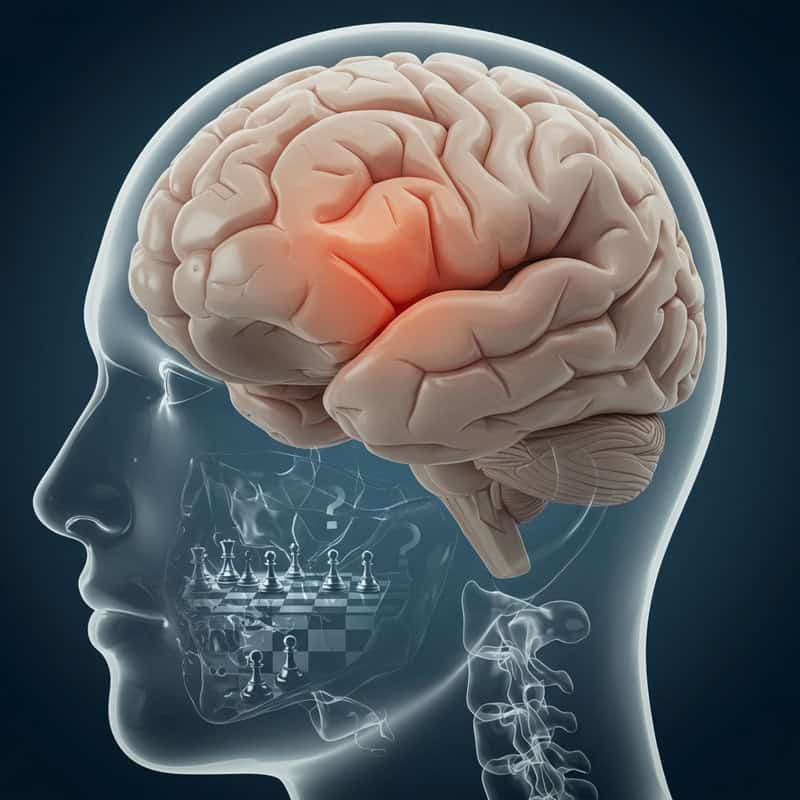
Early Alzheimer’s can significantly impair judgment and decision-making, often due to the disease’s impact on the prefrontal cortex—an area of the brain responsible for reasoning, planning, and impulse control. As this region deteriorates, individuals may begin to make choices that are uncharacteristically risky, inappropriate, or out of line with their usual behavior and values. Examples include falling for obvious scams, giving away large sums of money, dressing inappropriately for the weather, or neglecting personal hygiene.
Families might notice that a loved one becomes impulsive, susceptible to telemarketing schemes, or repeatedly makes poor financial choices. Others may ignore safety rules, such as leaving the stove on or wandering outside in unsafe conditions. Unlike occasional lapses, these patterns are persistent and often escalate over time, putting the individual at greater risk for harm.
The Alzheimer’s Association emphasizes that ongoing poor judgment—especially when it leads to negative consequences or is out of character—should be taken seriously. Caregivers should monitor for recurring risky behaviors, seek advice from healthcare professionals, and consider additional supervision or support to ensure safety and well-being as the disease progresses.
12. Difficulty Planning or Organizing

Disruptions in executive function—a set of mental processes governing planning, organizing, and problem-solving—often emerge in the early stages of Alzheimer’s disease. As the frontal lobes become affected, individuals may struggle to manage daily routines, create effective schedules, or carry out multi-step tasks. Simple activities like preparing a meal, organizing a grocery list, or following a recipe can become overwhelming or confusing.
Practical signs of these difficulties include missing appointments, forgetting to pay bills, being unable to plan family gatherings, or abandoning tasks midway. Loved ones might observe that their family member repeatedly starts a chore but cannot finish or gets mixed up when following instructions. These challenges go beyond mere distractions or occasional forgetfulness and represent a decline in the ability to coordinate and prioritize tasks.
The National Institute on Aging notes that persistent trouble with organization and planning is a significant early warning sign. Families should monitor for signs such as disorganized living spaces, missed deadlines, or difficulty managing medication schedules. When these patterns interfere with daily life, seeking an evaluation from a healthcare provider is recommended to identify the underlying cause and access helpful resources.
13. Struggling to Complete Familiar Tasks

As Alzheimer’s disease begins to affect various regions of the brain, even well-practiced, routine activities can become difficult to complete. This challenge is not due to lack of motivation but stems from a decline in memory, sequential thinking, and the brain’s ability to process and coordinate steps in a task. Activities such as preparing a favorite meal, operating a household appliance, or driving to a familiar location may suddenly become confusing or overwhelming.
Real-life examples include forgetting the steps in a beloved recipe, being unable to follow the sequence of turning on the washing machine, or losing track of the rules in a favorite card game. In some cases, the person may even abandon a task midway, unsure how to proceed or feeling frustrated by the complexity.
The Alzheimer’s Association highlights that occasional mistakes are common at any age, but persistent problems with familiar tasks—especially those previously mastered—may signal the onset of Alzheimer’s. If these difficulties interfere with independent living or daily routines, it’s important to seek a medical evaluation. Early intervention can help clarify the diagnosis and provide access to support and resources.
14. Neglecting Personal Hygiene

Neglecting personal hygiene is an early sign of Alzheimer’s that is often misunderstood or attributed to aging or depression. As the disease impairs memory, attention, and motivation, individuals may forget regular routines such as bathing, brushing teeth, changing clothes, or grooming. In addition, apathy—a common neuropsychiatric symptom of Alzheimer’s—can further diminish the drive to maintain self-care habits.
Unlike occasional forgetfulness, such as skipping a shower after a busy day, Alzheimer’s-related neglect is persistent and noticeable. Family members might observe a loved one wearing the same clothes for several days, having unwashed hair, or developing body odor. Bathrooms may show little evidence of recent use, and basic grooming supplies might go untouched for extended periods.
The National Institute on Aging notes that changes in personal hygiene are often among the first visible signs of cognitive decline. If a previously meticulous individual starts to disregard their appearance or neglect daily care, it’s important to consider a medical evaluation. Identifying these changes early allows families to offer support and seek interventions that help preserve dignity and well-being.
15. Unusual Sleep Patterns

Disrupted sleep patterns are a frequent yet underrecognized symptom in the early stages of Alzheimer’s disease. Changes in the brain’s regulation of circadian rhythms—the internal clock that governs sleep and wake cycles—can lead to difficulty falling asleep, frequent nighttime awakenings, or excessive daytime napping. Some individuals may experience “sundowning,” a phenomenon marked by increased confusion, restlessness, or agitation in the late afternoon or evening.
These disturbances go beyond occasional insomnia or the lighter sleep often experienced with aging. Instead, sleep issues in Alzheimer’s tend to be persistent and may significantly impact daily functioning and mood. Loved ones might notice that the affected person is awake at odd hours, wanders at night, or becomes disoriented after dark.
The Alzheimer’s Association explains that while disrupted sleep is common in older adults, consistent and pronounced changes—especially when accompanied by confusion, wandering, or increased daytime sleepiness—should prompt concern. If such patterns disrupt routines or safety, it is important to consult a healthcare professional. Early intervention can address sleep problems and help maintain quality of life for both the individual and their caregivers.
16. Difficulty Understanding Visual Images

Visual processing deficits are another early but often overlooked symptom of Alzheimer’s disease. As the disease affects the occipital and parietal lobes—regions responsible for interpreting visual information—individuals may struggle to read, judge distances, or distinguish colors and contrasts. These challenges can make everyday activities such as driving, reading, or navigating stairs more difficult and dangerous.
For example, a person might misjudge the depth of a step, have trouble following lines of text, or confuse similar-looking objects. They may also find it difficult to interpret patterns, recognize faces, or read signs. Such problems are not simply due to common age-related vision changes like cataracts or presbyopia, but rather stem from the brain’s inability to process visual stimuli accurately.
The Alzheimer’s Association notes that if vision-related confusion leads to increased falls, getting lost, or difficulty with reading and recognizing familiar people, families should be alert to the possibility of Alzheimer’s. Persistent visual misperceptions or struggles with spatial judgment warrant a comprehensive medical assessment, as early diagnosis can guide safety modifications and support strategies at home.
17. Problems with Spatial Relationships

Alzheimer’s disease can significantly impair spatial awareness, making it difficult for individuals to judge distances, navigate environments, or understand where objects and people are in relation to themselves. These challenges are rooted in the disease’s effects on the parietal lobes, which play a critical role in processing spatial information and coordinating movement in physical space.
Practical examples include difficulty parking a car, bumping into furniture or doorways, or struggling to pour liquids into a glass without spilling. Someone with early Alzheimer’s may also have trouble interpreting maps, following directions, or finding their way around familiar places. These issues go beyond the occasional misstep or clumsy moment; they are persistent and can increase the risk of accidents or injury.
The National Institute on Aging advises that if a loved one consistently has trouble with spatial tasks—such as navigating parking lots, getting lost on familiar routes, or misjudging distances—it may be time to seek a professional evaluation. Early recognition allows for safety interventions and may help slow further decline by addressing spatial challenges proactively.
18. Losing Track of Time or Dates

Temporal disorientation, or losing track of time, days, or even seasons, is a notable early symptom of Alzheimer’s disease. This goes beyond simply forgetting the day of the week on occasion—a common minor lapse. Instead, individuals may repeatedly ask what month or year it is, miss important appointments, or become confused about whether it’s morning or evening. They might also lose awareness of upcoming events or become disoriented by changes in routine, such as daylight saving time or holidays.
These difficulties arise as Alzheimer’s affects the brain’s temporal lobes, which are responsible for processing time and sequencing events. A person may show signs such as celebrating a holiday on the wrong date, missing scheduled activities, or being unable to follow a calendar. Some may become anxious or distressed when routines change, as they struggle to make sense of the passage of time.
The Alzheimer’s Association advises that persistent and worsening temporal confusion—especially when it interferes with daily life or causes distress—should prompt a medical evaluation. Early recognition provides an opportunity for support, planning, and management to help maintain independence for as long as possible.
19. Difficulty with Simple Calculations

A decline in numerical ability is a subtle but significant early sign of Alzheimer’s disease. Tasks that once seemed routine—such as balancing a checkbook, making change, or calculating a tip—can suddenly become challenging or confusing. This symptom arises as Alzheimer’s begins to affect the parietal lobes and other brain areas responsible for mathematical reasoning and problem-solving.
While occasional mistakes with numbers are common as people age, persistent trouble with even simple calculations—such as basic addition or subtraction—should raise concern. An individual might become frustrated when trying to pay bills, repeatedly make errors while shopping, or ask for help with math problems they previously handled with ease. Some may even avoid situations involving numbers altogether, masking their difficulties.
The Alzheimer’s Association highlights that ongoing problems with simple math, especially when they interfere with daily financial management or cause distress, can be an early indicator of Alzheimer’s rather than just normal aging. Families should watch for repeated calculation errors, confusion with numbers, or a sudden avoidance of tasks involving math, and seek medical evaluation if these changes persist.
20. Unusual Changes in Appetite or Eating Habits

Appetite and eating habits can shift noticeably in the early stages of Alzheimer’s disease, often due to changes in the brain areas that regulate hunger, satiety, and taste preferences. Individuals may develop cravings for unusually sweet or salty foods, eat repeatedly throughout the day, or lose interest in meals altogether. Some may forget they have already eaten and serve themselves multiple times, while others may leave food untouched or skip meals entirely.
Examples include eating inappropriate food combinations, consuming spoiled or non-food items, or showing a newfound preference for foods they previously disliked. These changes can result in weight gain, weight loss, or nutritional deficiencies. Unlike the occasional skipped meal or dietary experiment, Alzheimer’s-related shifts in appetite and eating behavior are persistent and often puzzling to family members.
The National Institute on Aging emphasizes that ongoing changes in eating habits—especially those leading to health concerns or social disruption—should not be ignored. If someone is consistently forgetting meals, overeating, or making unsafe food choices, it is important to consult a healthcare provider. Early intervention can help manage dietary changes and support overall well-being.
21. Misjudging Money or Values

Impaired judgment in financial matters is a common but often underappreciated early symptom of Alzheimer’s disease. As cognitive decline affects the brain’s frontal lobes, individuals may begin to lose their ability to accurately assess the value of money, make sound purchases, or recognize scams. This can manifest as giving away large sums to telemarketers, making repeated unnecessary purchases, or falling for fraudulent schemes that would not have fooled them before.
Families might notice unexplained withdrawals, frequent online orders, or bills for questionable products and services. Some individuals may become overly generous, giving away money or possessions without understanding the consequences. Others may neglect to pay important bills or respond inappropriately to requests for donations.
The Alzheimer’s Association warns that unusual financial decisions, particularly those that are out of character or put the person at risk, are red flags for cognitive impairment. Families should monitor financial accounts, look for patterns of impulsive or risky spending, and intervene early if concerning behaviors emerge. Protecting assets and seeking professional advice can help prevent further financial harm and provide necessary safeguards for those affected.
22. Difficulty Recognizing Faces

Difficulty recognizing familiar faces, known as prosopagnosia, can emerge in the early stages of Alzheimer’s disease. This symptom results from the breakdown of neural networks in the temporal and occipital lobes, which are responsible for processing and storing visual memories, including facial features. Unlike normal forgetfulness—such as momentarily blanking on an acquaintance’s name—Alzheimer’s-related facial recognition problems are more persistent and wide-ranging.
Individuals may struggle to identify close friends, neighbors, or even family members, especially in unfamiliar settings or when someone’s appearance changes. They might confuse people with similar features or rely more on context clues, such as voice or clothing, to recognize loved ones. These mix-ups can lead to social awkwardness, frustration, and withdrawal from group activities or gatherings.
The National Institute on Aging recommends seeking evaluation if someone repeatedly fails to recognize familiar faces, especially when it causes confusion or distress. Persistent facial recognition issues—distinct from occasional lapses—are a warning sign that should prompt a professional assessment. Early intervention can help address the underlying neurological changes and provide strategies to support social interactions.
23. Unusual Fixation on Routine

A pronounced fixation on routine is a subtle yet revealing early symptom of Alzheimer’s disease. Individuals may develop an intense need for sameness, insisting that daily activities, meal times, or routes remain unaltered. This behavioral rigidity often arises as a coping mechanism; as memory, processing speed, and adaptability decline, sticking to familiar routines offers a sense of security and control amid growing confusion.
For example, a person might insist on eating the same foods at every meal, become distressed if their schedule is disrupted, or react negatively to unexpected visitors or changes in environment. While many people find comfort in routine, Alzheimer’s-related fixation is unusually inflexible and can interfere with daily functioning and relationships.
The Alzheimer’s Association notes that a rigid adherence to routines—especially when paired with distress at minor changes—can be an important warning sign. If a loved one displays heightened anxiety, agitation, or anger when routines are disrupted, families should take note. When such patterns become pronounced and persistent, it is important to seek professional evaluation to determine if cognitive impairment may be the underlying cause.
24. Becoming Easily Distracted

Attention deficits are a common but subtle early sign of Alzheimer’s disease. Individuals may become easily distracted, losing focus during conversations, while reading, or even in the middle of simple tasks. This is more than the occasional lapse of attention that everyone experiences; it often reflects underlying changes in the brain’s frontal and parietal lobes, which play a crucial role in maintaining concentration and filtering out irrelevant stimuli.
For instance, a person might start washing dishes but wander away before finishing, lose track of a conversation topic, or struggle to stay engaged while watching television or reading a book. They may also become overwhelmed in noisy or busy environments, finding it hard to sort out important information from background distractions. These attention deficits can lead to incomplete tasks, misplaced items, and mounting frustration for both the individual and their loved ones.
The National Institute on Aging advises that persistent and noticeable distractibility—especially when it interferes with daily activities—should be differentiated from normal aging. If a loved one regularly loses focus, abandons tasks, or cannot follow through on instructions, it’s important to seek an evaluation to determine if cognitive decline may be to blame.
25. Forgetting Names of Common Objects

Frequent difficulty recalling the names of everyday objects is a notable early warning sign of Alzheimer’s disease. This issue, known as anomia, is distinct from the occasional “tip of the tongue” moments that most people experience. In Alzheimer’s, language retrieval problems become persistent, affecting communication and daily functioning. Individuals may refer to familiar items with vague descriptors (“that thing you write with” instead of “pen”) or gesture rather than use the correct word.
Real-life examples include struggling to name a fork, clock, or television, or repeatedly substituting general words like “thing” or “it” instead of specific terms. These word-finding difficulties can cause frustration, embarrassment, or anxiety, and may lead individuals to withdraw from conversations to avoid making mistakes. Families often notice increased pauses, circumlocution, or the use of unrelated words in speech.
The Alzheimer’s Association advises that frequent and worsening trouble naming common objects—especially when it disrupts daily communication—should prompt concern. If these episodes become a regular occurrence, it’s important to seek medical evaluation. Early identification enables timely intervention and access to language support strategies that can help maintain quality of life.
26. Misinterpreting Sarcasm or Jokes

Early decline in social cognition is a subtle yet telling symptom of Alzheimer’s disease, often reflected in difficulty understanding sarcasm, jokes, or figurative language. The brain regions responsible for interpreting tone, intent, and social cues—primarily the frontal and temporal lobes—begin to deteriorate, making it harder for individuals to grasp humor or nonliteral expressions.
For example, a person may take sarcastic remarks literally, fail to recognize playful teasing, or be confused by puns and jokes that rely on wordplay. They might respond inappropriately or seem offended by comments intended as lighthearted, leading to awkward social interactions. This change in humor comprehension is more pronounced than the occasional missed punchline or misunderstanding common with aging; it is persistent and affects a wide range of social situations.
The Alzheimer’s Association points out that difficulty interpreting sarcasm and humor is a sign of altered social understanding. Families should take note if a loved one consistently misreads jokes, becomes overly literal, or struggles to follow playful banter. When these changes are ongoing and interfere with relationships or social participation, a professional evaluation for cognitive decline is warranted.
27. Sudden Suspicion or Paranoia

Sudden onset of suspicion or paranoia is a distressing but not uncommon early symptom of Alzheimer’s disease. Individuals may develop unfounded fears, begin to mistrust family members or caregivers, or accuse others of stealing, lying, or conspiring against them. These changes are rooted in the neurological disruptions of the frontal and temporal lobes, which interfere with reasoning, memory, and the ability to accurately interpret reality.
For instance, a person may insist that their belongings have been stolen when they are simply misplaced, suspect loved ones of hiding things, or feel convinced that strangers are watching or plotting against them. Such beliefs are typically out of character, persistent, and resistant to reassurance. Paranoia may also manifest as fear of being left alone or reluctance to accept help from others, leading to increased social withdrawal or agitation.
The National Institute on Aging emphasizes that new patterns of suspicion or paranoia—especially when they cause distress or disrupt relationships—should prompt families to seek medical advice. Early identification and intervention are vital, as these behavioral changes can be managed with support, education, and appropriate care strategies.
28. Difficulty Adapting to Change
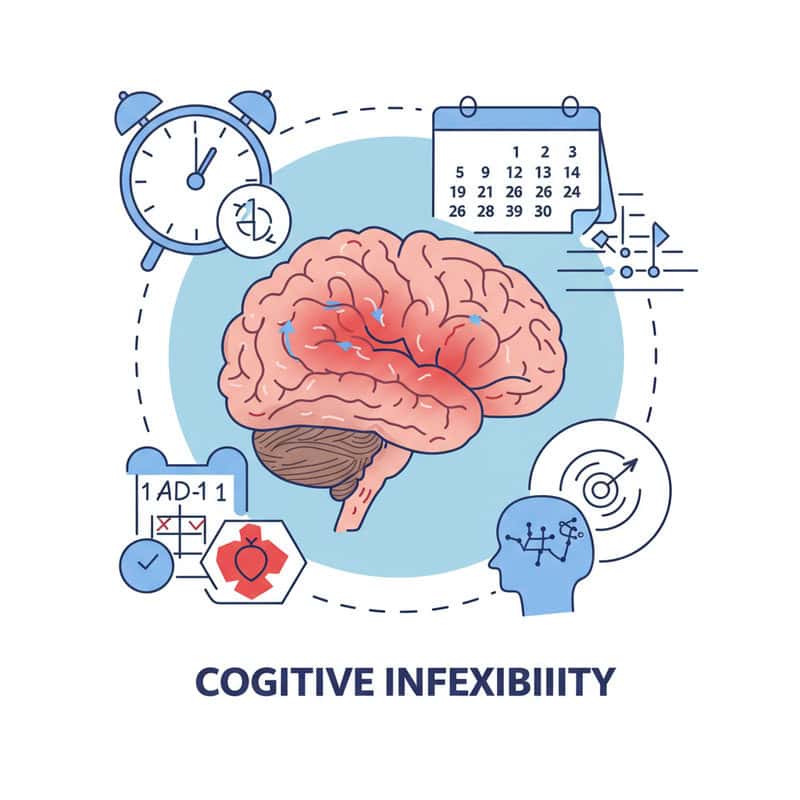
Reduced cognitive flexibility—a diminished ability to adjust to new situations or routines—is a common early feature of Alzheimer’s disease. As the frontal lobes and related neural pathways are affected, individuals may become increasingly resistant to even minor changes in their environment or daily schedule. This inflexibility goes beyond a preference for routine or discomfort with the unexpected; it is marked by distress, confusion, or agitation when confronted with novelty or disruption.
Real-world examples include becoming upset by a new caregiver, reacting strongly to rearranged furniture, refusing to try a different route home, or struggling to cope with changes in mealtime or social plans. This rigidity can make travel, medical appointments, or family gatherings especially challenging, often leading to arguments or withdrawal.
The Alzheimer’s Association highlights that persistent and intense resistance to change—especially when accompanied by other cognitive symptoms—should be taken seriously. Families should monitor for patterns of inflexibility that disrupt daily life or relationships. When such behaviors become chronic and interfere with well-being, a professional evaluation is recommended to determine if cognitive decline is the underlying cause and to develop supportive strategies.
29. Unexplained Anxiety or Restlessness

Heightened anxiety or restlessness can be an early, subtle sign of Alzheimer’s disease, often preceding more overt memory problems. Individuals may experience constant worry, agitation, or a vague sense of unease without a clear trigger. This increased anxiety can manifest as pacing, fidgeting, repetitive movements, or an inability to relax, even in familiar settings. The underlying cause often lies in the brain’s changing chemistry and the progressive disruption of areas that regulate mood and emotional responses.
Unlike normal stress or occasional nervousness, Alzheimer’s-related anxiety tends to be persistent and may not respond to reassurance or typical coping strategies. Real-world examples include repeatedly asking about upcoming events, expressing fear of being left alone, or becoming upset by minor changes in routine. Some individuals may also develop rituals or compulsive behaviors in an attempt to self-soothe.
The National Institute on Aging notes that ongoing, unexplained anxiety—especially when it leads to restlessness or disrupts daily life—should be considered a potential red flag. If a loved one’s agitation is persistent and out of character, families should seek medical advice to explore underlying causes and access appropriate support or interventions.
30. Trouble Following Instructions

Difficulty following instructions is a common early sign of Alzheimer’s disease, stemming from declines in comprehension and working memory. The ability to process, remember, and act on even simple directions depends on several brain regions, including the frontal and parietal lobes. As these areas are affected, individuals may struggle to carry out multi-step tasks, such as following a recipe, assembling a product, or adhering to medication schedules.
Examples include getting lost in the steps of preparing a meal, needing repeated reminders to complete a chore, or being unable to follow directions for a game or household device. Sometimes, the person may appear distracted or disinterested, but the root issue is often an inability to retain and sequence information, not a lack of effort or motivation.
The National Institute on Aging advises families to watch for persistent confusion with instructions—especially those the person previously handled easily. If a loved one frequently becomes overwhelmed or requires constant prompting to complete simple tasks, it may indicate more than ordinary forgetfulness. Early recognition and evaluation by a healthcare professional can lead to interventions that support independence and daily functioning.
31. Loss of Empathy
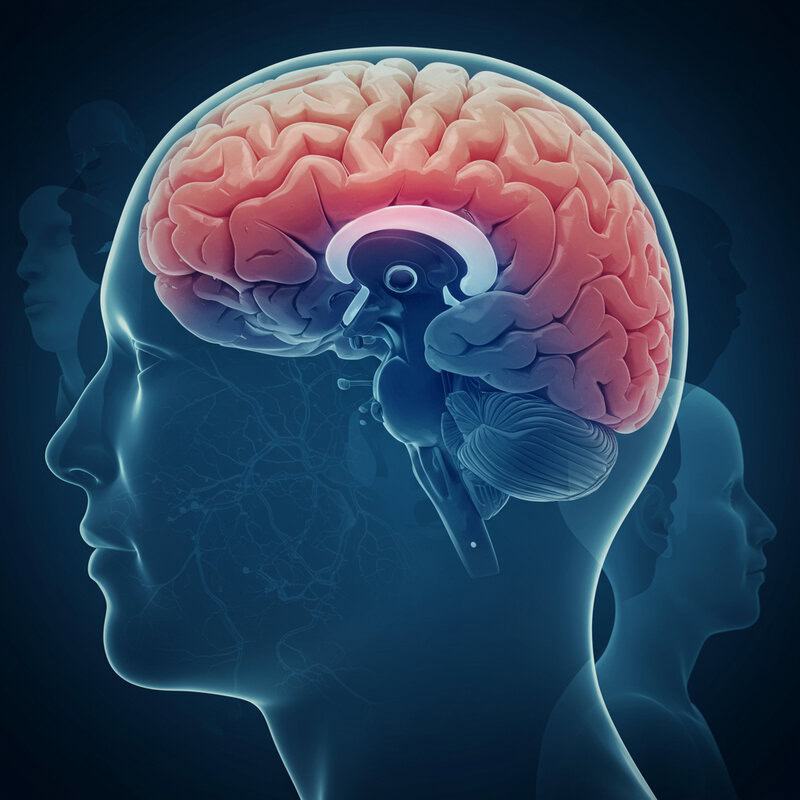
Loss of empathy, or a diminished ability to understand and respond to the feelings of others, can emerge in the early stages of Alzheimer’s disease. The condition affects the brain’s temporal and frontal lobes, which are responsible for emotional insight and social awareness. As these regions deteriorate, individuals may become less attuned to the emotions, needs, or perspectives of those around them.
Families might notice uncharacteristically insensitive remarks, a lack of interest in loved ones’ experiences, or an inability to comfort someone in distress. For example, a person may not recognize when a friend is upset, fail to offer condolences after sad news, or dismiss a spouse’s concerns without acknowledgment. This shift is different from occasional thoughtlessness; it is persistent and marks a clear departure from the person’s previous emotional responsiveness.
The Alzheimer’s Association emphasizes that ongoing loss of empathy or inappropriate reactions to social situations should prompt families to consider a cognitive screening. These changes can significantly impact relationships and quality of life, making early recognition and intervention crucial for providing support, resources, and understanding for both the individual and their loved ones.
32. Uncharacteristic Impulsivity
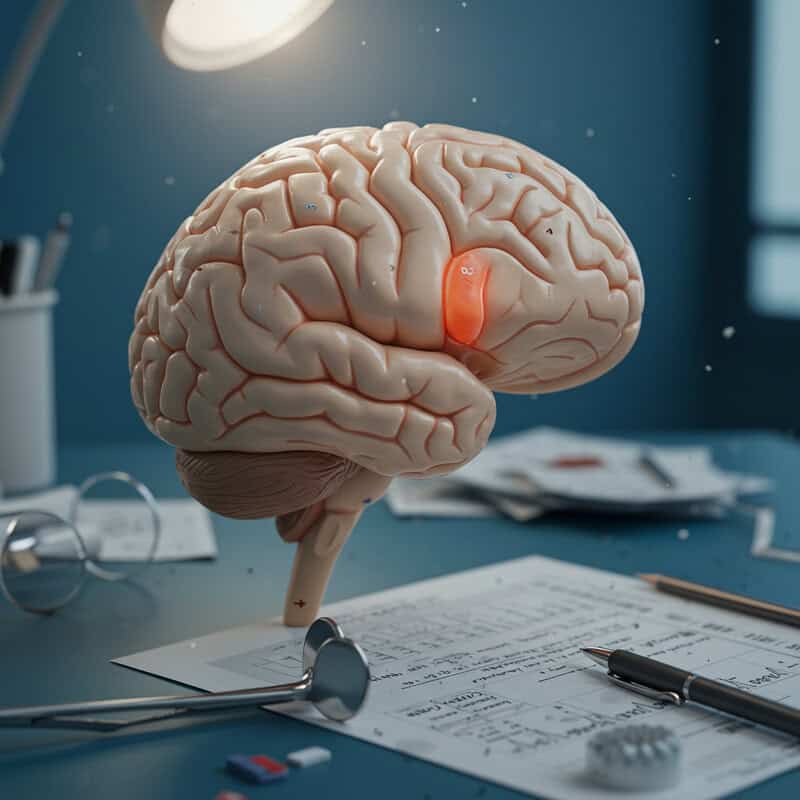
Uncharacteristic impulsivity is another subtle yet important early symptom of Alzheimer’s disease. The prefrontal cortex—a brain region responsible for impulse control and self-regulation—becomes compromised, leading individuals to act or speak without their usual restraint. This can result in behaviors that are out of character, socially inappropriate, or even risky.
Real-life examples include making blunt or tactless comments, interrupting conversations, overspending, grabbing food from someone else’s plate, or making hasty decisions without considering consequences. Someone who was previously cautious or measured may suddenly display impatience, disregard for social norms, or a tendency to act on whims. This loss of inhibition can cause embarrassment, conflict, or even safety concerns, especially if it involves financial or physical risks.
The Alzheimer’s Association advises families to take note when impulsive behaviors become frequent and are inconsistent with the person’s prior personality. If these changes are persistent and interfere with relationships or daily life, a medical assessment is warranted. Recognizing and addressing impulsivity early can help families implement strategies to maintain safety and support the individual’s well-being as the disease progresses.
33. Difficulty Reading or Interpreting Signs

Difficulty reading or interpreting signs is a subtle yet impactful symptom of early Alzheimer’s disease. This challenge arises from the combined effects of visual processing errors and language comprehension deficits, as the disease affects both the occipital and temporal lobes. Individuals may find printed signs, symbols, or instructions increasingly confusing, leading to navigation problems in both familiar and unfamiliar environments.
For example, a person might struggle to read street names, misinterpret restroom or exit signs, or become unable to follow written directions in public spaces like grocery stores or hospitals. Simple tasks such as finding the correct building entrance or understanding posted instructions can become daunting, resulting in confusion, frustration, or even getting lost. Unlike normal aging, where minor reading mistakes may occur, Alzheimer’s-related problems with signs are persistent and often escalate over time.
The National Institute on Aging notes that ongoing trouble with reading, interpreting, or responding to signs—especially when it leads to safety concerns or navigation difficulties—warrants a professional evaluation. Early identification of these issues allows families to implement supportive measures and prepare for increasing challenges with independent navigation and daily activities.
34. Reverting to Childhood Behaviors

Reverting to childhood behaviors is an often-overlooked early sign of Alzheimer’s disease that can be puzzling for families. This regression may manifest as childlike playfulness, seeking comfort items, increased dependency, or using simplified language and reasoning. The underlying cause is the progressive loss of higher-order cognitive functions and emotional regulation, which can lead individuals to seek the safety and familiarity associated with childhood routines and relationships.
Examples include hugging stuffed animals, requesting to be tucked in at night, exhibiting tantrums, or needing constant reassurance from caregivers. Some may display behaviors such as thumb-sucking, speaking in a childlike manner, or engaging in repetitive, simple activities reminiscent of their youth. These behaviors are more than nostalgia or playful moments—they reflect a deeper neurological change as Alzheimer’s affects the brain’s ability to cope with stress and navigate complex social situations.
The National Institute on Aging advises that persistent or escalating childhood-like behaviors, especially when paired with other cognitive symptoms, should prompt a professional evaluation. Such regression is a sign that the disease may be progressing, and early recognition enables families to adapt care strategies and provide additional emotional support.
35. Hoarding or Collecting Unusual Items

Hoarding or compulsively collecting unusual items can be an early behavioral symptom of Alzheimer’s disease. As Alzheimer’s impacts the frontal lobes, which are responsible for judgment, organization, and impulse control, individuals may begin to gather and store objects without clear purpose or value. This can include items like newspapers, junk mail, plastic bags, or even food wrappers, cluttering living spaces and sometimes creating safety hazards.
Unlike purposeful collecting or occasional sentimental saving, Alzheimer’s-related hoarding is often repetitive and lacks logical reasoning. The person may become anxious if anyone tries to discard these items, show defensive behavior, or struggle to explain the significance of what they are saving. These compulsive tendencies may serve as a coping mechanism for anxiety or a way to exert control amid growing cognitive confusion.
The National Institute on Aging highlights that persistent and escalating hoarding or collecting—especially when it interferes with daily living or safety—should be seen as a potential indicator of cognitive decline. Families should take note when such behaviors become pronounced and seek a professional evaluation to address underlying neurological changes and implement supportive interventions.
36. Changes in Clothing Choices

Noticeable changes in clothing choices can be an early indicator of Alzheimer’s disease, reflecting declining judgment, impaired awareness, or difficulty with decision-making. Individuals may begin to dress inappropriately for the weather—wearing heavy coats on warm days or summer attire in winter—or select mismatched or soiled clothing without concern. These wardrobe changes often arise from cognitive decline in the frontal lobes, which govern organization, sequencing, and self-awareness.
Examples include repeatedly wearing the same outfit for days, layering clothes incorrectly, forgetting to fasten buttons or zippers, or overlooking stains and tears. Some may dress in a way that is out of character for their usual style, such as neglecting personal grooming or combining clashing patterns and colors. These behaviors differ from occasional fashion slips; they are persistent, puzzling, and can impact personal hygiene, social interactions, and overall safety.
The Alzheimer’s Association notes that ongoing difficulties with dressing or a sudden disregard for appropriate attire should prompt concern. Families should observe for patterns of neglect or confusion in clothing choices and consider seeking professional evaluation if these changes are frequent and interfere with daily life or well-being.
37. Forgetting How to Use Appliances

Forgetting how to use familiar appliances is a clear sign of procedural memory loss, a feature of early Alzheimer’s disease. Procedural memory enables us to perform routine tasks—like operating a microwave, coffee maker, stove, or washing machine—without conscious thought. As Alzheimer’s affects the brain’s ability to store and retrieve these learned sequences, individuals may become confused or anxious when faced with everyday household devices.
Real-life examples include putting metal in the microwave, forgetting which buttons to press on the remote control, leaving the stove on, or being unable to start a dishwasher. These mishaps may be dismissed as simple mistakes, but when they become frequent and involve appliances once used confidently, they point to a deeper cognitive issue.
The National Institute on Aging emphasizes that repeated trouble operating appliances—especially when it leads to safety concerns or disrupts daily routines—should prompt families to consider a cognitive screening. Early recognition of procedural memory loss provides an opportunity to implement safety measures, provide support, and seek interventions that can help maintain independence for as long as possible.
38. Inappropriate Emotional Reactions

Mismatched or inappropriate emotional responses are a subtle but telling sign of early Alzheimer’s disease. As the brain’s frontal and temporal lobes become impaired, individuals may lose the ability to regulate emotions or interpret social cues correctly. This can result in laughing during sad events, crying at neutral remarks, or displaying anger out of proportion to the situation. Such reactions can confuse or embarrass loved ones, leading to misunderstandings or social withdrawal.
For example, someone might laugh at news of a tragedy, become irritated by a simple question, or show indifference when others express concern or happiness. These responses are not occasional mood swings but persistent patterns that are clearly out of character. The underlying cause is Alzheimer’s-related disruption of the networks responsible for emotional processing and impulse control, making it harder for the individual to match their reaction to the context.
The National Institute on Aging advises families to take note if a loved one’s emotional responses no longer fit the situation or seem unpredictable. Persistent inappropriate emotions, especially when paired with other cognitive symptoms, should prompt a professional evaluation to explore underlying causes and develop effective support strategies.
39. Repeatedly Missing Appointments

Repeatedly missing appointments is a frequent and consequential sign of early Alzheimer’s disease, reflecting failures in both planning and memory. As the disease affects the brain’s frontal and temporal lobes, individuals may struggle to record, remember, or prioritize upcoming commitments. Tasks that once seemed routine—such as attending doctor visits, social gatherings, or scheduled calls—become increasingly challenging to manage without reminders or assistance.
Everyday examples include forgetting about medical check-ups, hairdresser appointments, or family events, even after receiving reminders. Sometimes, the person may show up on the wrong day or time, or double-book themselves due to confusion. These lapses go beyond occasional forgetfulness or busyness; they become a pattern that disrupts daily life and strains relationships.
The Alzheimer’s Association points out that consistent problems keeping track of appointments—especially when paired with other cognitive changes—should prompt concern. Families are encouraged to monitor the frequency and circumstances of missed appointments, use written calendars or digital reminders, and seek a medical evaluation if lapses become persistent. Early intervention can help establish supportive routines and identify further strategies to promote independence and well-being.
40. Overlooking Household Safety

Overlooking household safety is a significant and often dangerous early symptom of Alzheimer’s disease. As memory, attention, and problem-solving abilities decline, individuals may forget to turn off stoves, leave water running, or mishandle electrical appliances. These lapses put both the affected person and those around them at increased risk of accidents such as fires, floods, or electrical hazards. Simple safety routines that were once automatic can become inconsistent or neglected altogether.
Examples include leaving doors unlocked, forgetting to blow out candles, misplacing hazardous cleaning supplies, or neglecting to use handrails on stairs. Loved ones may notice burnt pans, scorched countertops, or unexplained household mishaps. These incidents differ from occasional carelessness; they are persistent and often escalate as cognitive decline progresses.
The National Institute on Aging recommends families monitor for recurring safety oversights and take proactive steps—such as installing automatic shut-off devices, using medication organizers, and removing hazards from the home. If safety lapses are frequent, it’s crucial to seek a medical evaluation and develop a tailored care plan to support independence while minimizing risks. Early recognition and intervention can help prevent serious accidents and maintain quality of life.
41. Difficulty Handling Change or Coins

Difficulty handling change or coins is a subtle yet telling early sign of Alzheimer’s disease, reflecting both fine motor decline and cognitive impairment. Managing money at the register requires not only dexterity but also the ability to process numerical information and follow multi-step instructions. As Alzheimer’s affects the brain’s parietal and frontal lobes, individuals may find it increasingly challenging to distinguish coins, count change, or make correct payments.
In real-world situations, this may manifest as fumbling with coins at a cashier, taking excessive time to pay, or giving the wrong amount of money and appearing confused by the transaction. Some may avoid cash payments altogether, rely heavily on others for assistance, or become anxious during simple purchases. These difficulties go beyond occasional clumsiness or distraction; they are recurrent and can cause embarrassment or frustration.
The Alzheimer’s Association notes that persistent trouble handling money—especially when it interferes with independence or daily routines—should be treated as a red flag. Families should observe changes in cash handling abilities, support their loved one in financial situations, and seek professional evaluation if problems persist, as early intervention can help manage cognitive and safety concerns.
42. Unexplained Bruises or Injuries

Unexplained bruises or injuries can be an important early indicator of Alzheimer’s disease, often resulting from increased disorientation and impaired spatial awareness. As the brain’s ability to process visual and spatial information declines, individuals may misjudge distances, trip over obstacles, or bump into furniture more frequently. Unlike normal clumsiness, which tends to be occasional and easily explained, Alzheimer’s-related accidents are recurrent and often go unnoticed by the individual until a bruise or injury appears.
Family members might observe frequent cuts, scrapes, or bruises on arms and legs, sometimes accompanied by vague or inconsistent explanations. Accidents may occur during everyday activities, such as walking through a familiar room, navigating stairs, or reaching for objects on shelves. These incidents can be especially concerning when they happen in safe, well-known environments, or when the person does not recall how the injury occurred.
The National Institute on Aging recommends consulting a healthcare professional if a loved one experiences repeated, unexplained injuries. Persistent accidents may signal a decline in cognition and coordination, warranting a comprehensive evaluation to address safety risks and implement preventive measures in the home environment.
43. Forgetting Meal Preparation Steps

Forgetting steps in meal preparation is a common and disruptive early symptom of Alzheimer’s disease. The condition impairs sequential thinking—the ability to remember and execute tasks in the correct order—which is essential for successful cooking. Individuals may begin to skip crucial steps, such as forgetting to add key ingredients, leaving food uncooked, or neglecting to turn off the stove or oven after use.
Kitchen mishaps can include serving raw meat, burning food, or leaving pots unattended until they boil over. Some may set the table before the meal is ready, forget to preheat the oven, or abandon meal preparation altogether out of frustration or confusion. These lapses are distinct from occasional distraction; they become a pattern and often lead to incomplete or inedible meals.
The Alzheimer’s Association advises families to watch for consistent mistakes or confusion during cooking routines. If a loved one who once enjoyed cooking now struggles with recipes, leaves out steps, or repeatedly needs assistance in the kitchen, it may signal cognitive decline. Early recognition and support can help maintain safety and daily nutrition while reducing stress for both the individual and their caregivers.
44. Difficulty Using the Telephone

Difficulty using the telephone is a frequently overlooked but telling early sign of Alzheimer’s disease. This challenge can stem from both communication issues and technical confusion, as the brain’s decline affects memory, language, and problem-solving skills. Individuals may forget how to dial numbers, struggle with voicemail instructions, or become unable to operate smartphones or traditional phones. They may also have trouble organizing their thoughts during phone conversations, leading to awkward silences or incomplete messages.
Real-world examples include dialing the wrong numbers repeatedly, being unable to retrieve voicemails, hanging up accidentally, or forgetting the purpose of a call midway through. Some may stop making phone calls altogether, fearing embarrassment or frustration. Others may become anxious when the phone rings, unsure of how to answer or respond.
The Alzheimer’s Association notes that persistent trouble using the telephone—especially when it interferes with social connections or daily routines—should be taken seriously. Families should observe for repeated difficulties, missed messages, or avoidance of phone use, and seek a professional evaluation if these patterns continue. Early intervention can help maintain vital lines of communication and support independence.
45. Ignoring Mail or Important Notices

Ignoring mail or important notices is a subtle but significant early warning sign of Alzheimer’s disease. As attention, organizational skills, and memory decline, individuals may lose track of incoming correspondence, leading to stacks of unopened mail, missed bills, or overlooked important documents. This neglect is often due to a combination of inattention, confusion about the content, and an inability to prioritize tasks—a marked shift from earlier habits of managing household affairs.
Practical consequences include unpaid utility bills, late fees, missed medical appointments, or ignored legal notices. Loved ones may notice growing piles of unopened envelopes, confusion over bank statements, or repeated questions about mail that has already been addressed. These lapses go beyond simple procrastination or occasional forgetfulness; they represent a persistent and escalating pattern of neglect.
The Alzheimer’s Association advises that ongoing trouble handling mail and important paperwork—especially when it results in household confusion or financial difficulties—should prompt concern. Families should monitor for changes in correspondence management, offer assistance as needed, and seek a cognitive evaluation if these patterns persist, as early intervention can help prevent serious consequences and provide much-needed support.
46. Unusual Changes in Driving Ability

Unusual changes in driving ability often signal the early stages of Alzheimer’s disease. The act of driving relies on spatial awareness, attention, memory, and sound judgment—all areas that can be compromised as the disease progresses. Individuals may become confused by familiar routes, miss traffic signs, struggle with lane changes, or react slowly to unexpected road conditions. These deficits can lead to increased risks, such as getting lost, causing minor accidents, or receiving more traffic citations than usual.
Real-life examples include stopping at green lights, getting disoriented in parking lots, misjudging distances while turning or parking, or becoming easily distracted by routine in-car tasks like adjusting the radio. Some may become anxious while driving, avoid nighttime trips, or frequently rely on passengers for navigation. Loved ones might notice new dents or scratches on the car, or hear reports of “close calls” from the driver or others.
The National Institute on Aging stresses the importance of monitoring changes in driving skills, as even minor lapses can have serious consequences. Families should intervene if consistent safety concerns arise, seeking a professional driving assessment and considering alternative transportation options to ensure the safety of everyone involved.
47. Forgetting to Take Medications

Forgetting to take prescribed medications is a frequent and potentially dangerous early symptom of Alzheimer’s disease. As short-term memory and organizational abilities decline, individuals may miss doses, take the wrong medication at the wrong time, or accidentally double-dose. These lapses can have significant health consequences, especially for those managing chronic conditions like diabetes, heart disease, or high blood pressure.
Common signs include finding full pillboxes at the end of the week, discovering unopened prescription bottles, or noticing that medications are taken inconsistently. Some may repeatedly ask if they have already taken their pills, or become confused by medication schedules and instructions. Such patterns are more than occasional forgetfulness; they represent a persistent risk to health and well-being.
The National Institute on Aging recommends families monitor medication adherence by using pill organizers, setting reminders, or supervising administration when necessary. If missed doses or confusion about medications become recurrent, it is crucial to seek a medical evaluation. Early intervention can help prevent dangerous complications, ensure proper medication management, and support overall health and independence for the individual affected by Alzheimer’s.
48. Repeatedly Asking for Directions

Repeatedly asking for directions is a common early symptom of Alzheimer’s disease, reflecting impairment in spatial memory and orientation. As the brain’s hippocampus and related areas deteriorate, individuals lose the ability to form new spatial memories and recall familiar routes. This can make even routine outings—such as visiting the grocery store, church, or a friend’s house—confusing and anxiety-provoking.
Real-world struggles might include repeatedly asking for directions to the same locations, getting lost in familiar neighborhoods, or forgetting the way home. Affected individuals may need step-by-step guidance, call family members for help, or become distressed when navigating new places. Unlike occasional uncertainty about directions, this pattern is frequent and persistent, indicating a fundamental change in the brain’s ability to process and retain spatial information.
The Alzheimer’s Association emphasizes that consistent difficulty with navigation or orientation—especially if it interferes with independence or leads to safety concerns—should prompt a cognitive evaluation. If a loved one frequently asks for directions, becomes lost, or experiences increased anxiety about traveling, it is important to seek medical advice and consider supportive interventions for safe mobility.
49. Difficulty Following TV or Movie Plots

Difficulty following the plot of a television show or movie is a subtle but significant early sign of Alzheimer’s disease. This symptom stems from problems with sequential thinking, attention, and short-term memory. As the brain’s ability to process and retain information declines, individuals may struggle to keep track of characters, storylines, or the sequence of events, even in programs they previously enjoyed.
Real-world examples include asking repeated questions about what just happened, expressing confusion about characters or plot twists, or losing interest in watching TV or movies altogether. Some may abandon a show midway or become frustrated by their inability to follow conversations or story arcs. These challenges are more than occasional distractions—they are persistent and often accompanied by other cognitive changes.
The Alzheimer’s Association advises families to take note if a loved one frequently loses the thread of a TV show or movie, repeatedly asks for explanations, or withdraws from activities they once found entertaining. Persistent difficulty with following plots should prompt consideration of a cognitive evaluation, as early recognition enables timely support and adaptation of leisure activities.
50. Loss of Sense of Smell

A diminished sense of smell, or anosmia, is one of the earliest and most frequently overlooked symptoms of Alzheimer’s disease. Research shows that the olfactory bulb and related neural pathways—areas of the brain involved in detecting and processing scents—are often affected by Alzheimer’s pathology long before more obvious cognitive changes emerge. This loss can manifest as difficulty detecting everyday odors, such as coffee, flowers, or even spoiled food, and may go unnoticed until it leads to safety or quality-of-life issues.
Individuals might stop noticing pleasant aromas, fail to recognize burning or gas leaks in the home, or lose interest in favorite foods due to a reduced sense of taste (which is closely linked to smell). Unlike temporary changes from allergies or infections, Alzheimer’s-related loss of smell is persistent and typically progressive.
According to the National Institute on Aging, a sudden or unexplained decline in olfactory function—especially in older adults—should prompt further investigation, as it can be an early indicator of neurodegenerative disease. Families and caregivers should seek a medical evaluation if they observe this change, as early recognition offers an opportunity for timely intervention and monitoring of other symptoms.
Conclusion

Recognizing the subtle early symptoms of Alzheimer’s disease is critical for timely intervention and improved quality of life. These signs often go unnoticed or are mistaken for normal aging, delaying valuable support and treatment. Early screening or consultation with a healthcare professional can help clarify concerns, safeguard independence, and provide families with vital resources. If you observe persistent, unusual changes in a loved one’s memory, behavior, or daily routines, do not hesitate to seek guidance. Acting promptly ensures access to diagnosis, care planning, and support services. For more information, visit the Alzheimer’s Association 10 Warning Signs and the National Institute on Aging.
Disclaimer

This article is for informational purposes only and is not a substitute for professional medical advice, diagnosis, or treatment. Always consult a healthcare provider regarding any medical concerns. For guidance, visit the CDC Alzheimer’s Resources.
Disclaimer
The information provided in this article is for general informational purposes only. While we strive to keep the information up-to-date and correct, we make no representations or warranties of any kind, express or implied, about the completeness, accuracy, reliability, suitability, or availability with respect to the article or the information, products, services, or related graphics contained in the article for any purpose. Any reliance you place on such information is therefore strictly at your own risk.
In no event will we be liable for any loss or damage including without limitation, indirect or consequential loss or damage, or any loss or damage whatsoever arising from loss of data or profits arising out of, or in connection with, the use of this article.
Through this article you are able to link to other websites which are not under our control. We have no control over the nature, content, and availability of those sites. The inclusion of any links does not necessarily imply a recommendation or endorse the views expressed within them.
Every effort is made to keep the article up and running smoothly. However, we take no responsibility for, and will not be liable for, the article being temporarily unavailable due to technical issues beyond our control.





